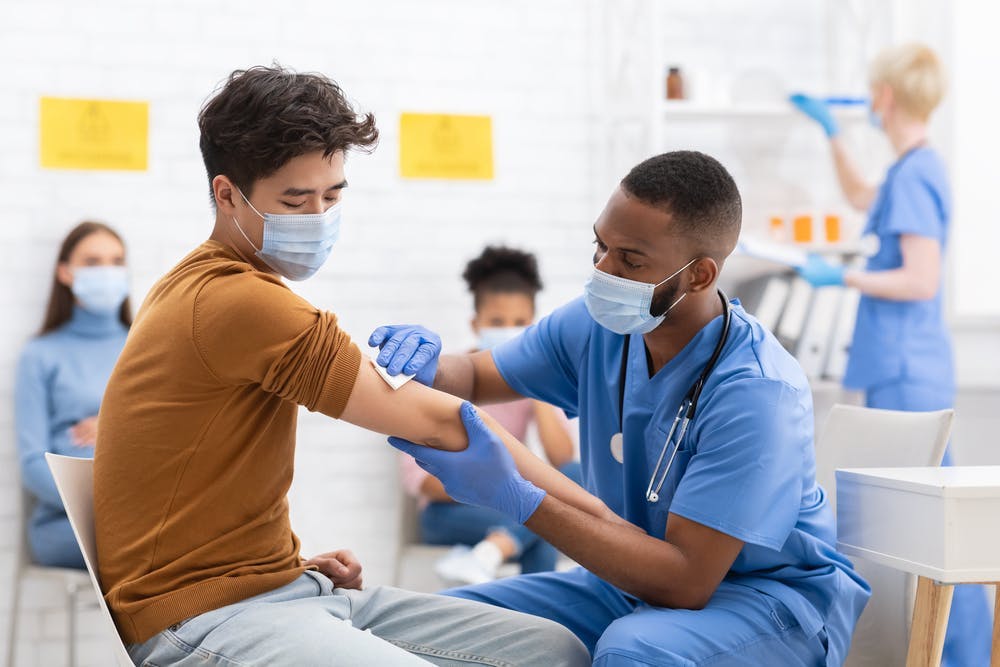Expert advice on how to get rid of ringworm
Your skin is your body’s largest organ, and while its primary function is to protect your body from infection, it can sometimes become infected.
Ringworm, or dermatophytosis, is a common skin infection caused by different groups of fungi. It’s characterized by an itchy, red rash and infects up to 25% of the U.S. population at any given time.
Ringworm is transmitted through contact with infected people, animals and items or surfaces infected people or animals have also had contact with, such as clothes, towels and bedding.
If you’re wondering how to cure ringworm fast, here’s everything you need to know, including the different types of ringworm, its symptoms and how to get rid of a ringworm infection.
Ringworm treatment
Ringworm is highly contagious, so early intervention is critical to preventing it from spreading to other areas of your body or infecting others.
Antifungal medications are your best bet to cure ringworm fast. Antifungal medications are available over the counter (OTC) or by prescription and come in cream, ointment and pill form.
The type and severity of a ringworm infection determine what kind of treatment you need; regardless of what type of ringworm infection you or your family member have, taking the appropriate antifungal medication can get rid of it quickly.
How long does ringworm last?
Typically, it takes two to four weeks with treatment for a ringworm infection to clear up. However, ringworm infections on the scalp, facial hair and nails, however, tend to last for a few months. Immunocompromised people might find it more challenging to get rid of an infection.
When to visit a doctor
If you’ve started an OTC antifungal treatment and your symptoms are not better within two weeks—or your infection has spread to other body parts—you should visit a medical professional or an urgent care center.
Your provider can advise you on how to get rid of ringworm and may prescribe a stronger medication.
Treatment for different types of ringworm
Ringworm infections are usually localized to a particular area of the body. Common sites of ringworm include feet, groin, scalp, beard and nails. The location of the infection determines what it’s called and how to get rid of ringworm. Here are seven types of ringworm:
1. Tinea corporis
Body Part Affected: Torso, arms or legs
Signs and Symptoms:
- Classic round spots typical of ringworm that can have a more pronounced outer border
- Starts with a red, itchy and scaly area of skin that is slightly raised
- A kerion or blister-like lesion can appear
Treatment: Generally treated with nonprescription antifungal cream, lotion or powder for two to four weeks.
2. Tinea pedis or athlete’s foot
Body Part Affected: Feet
Signs and Symptoms:
- Round, dry patches on the top of the foot
- Clusters of blisters on the side of the foot
- Moist, peeling and irritable skin between the toes
- The entire sole, heel and sides of the foot can become dry but not inflamed
Treatment: Generally treated with nonprescription antifungal cream, lotion or powder for two to four weeks.
3. Tinea unguium or onychomycosis
Body Part Affected: Fingernails or toenails
Signs and Symptoms:
- White or yellow streaks on the fingernails or toenails
- Crumbly nail that may lift easily
- Flaky white patches on the top of the nail plate
Treatment: Generally treated with prescription antifungal medication taken by mouth for several months; a topical medical nail lacquer might also be suggested.
4. Tinea cruris, or jock itch
Body Part Affected: Groin
Signs and Symptoms:
- Reddish-brown rash that starts in the folds of the groin and can spread to the thighs or buttocks
Treatment: Generally treated with nonprescription antifungal cream, lotion or powder for two to four weeks.
5. Tinea barbae, or barber’s itch
Body Part Affected: Facial hair areas
Signs and Symptoms:
- Red, lumpy blisters
- Crusting around the beard or mustache area that can be itchy
- Facial hair is easily pulled out
Treatment: Generally treated with prescription antifungal medication taken by mouth for one to three months.
6. Tinea capitis
Body Part Affected: Scalp
Signs and Symptoms:
- Round, itchy and scaly spots
- Dry, scaly skin; similar to dandruff
- Bald spots from hair loss
- A kerion or blister-like lesion can appear
Treatment: Generally treated with prescription antifungal medication taken by mouth for one to three months. Topical antifungal shampoo might also be suggested to prevent the spreading of scalp ringworm.
7. Tinea faciei
Body Part Affected: Face (excluding the facial hair and scalp areas)
Signs and Symptoms:
- Round or oval itchy spots on the cheeks
- Edges of the spots might be raised
- Spots may include bumps, blisters or scabs
Treatment: Generally treated with nonprescription antifungal cream, lotion, or powder for two to four weeks.
Can I prevent ringworm from spreading?
Ringworm is very contagious and spreads quickly. Prompt treatment is the best way to prevent the spread, but other tips include:
- Keep infected areas clean and dry. When showering, wash affected areas and dry them with a clean towel. Use a different towel for other areas of your body. Since fungi love moist environments, this is particularly important after a workout.
- Treat all areas infected. If your ringworm has spread to other sites, it’s important to use cream, lotion, powder or oral medicine as directed on all infected body parts. For example, if you’re suffering from jock itch and athlete’s foot, use antifungal lotions and powders for both infections.
- Wash your hands regularly, especially after touching infected body parts.
- Wash your clothes, shoes (with athlete’s foot), towels, and bedding and wear clothes only once before laundering.
- Wear flip-flops or waterproof shoes in public showers, pool areas and locker rooms. Don’t go barefoot if you have Athlete’s Foot because you could easily spread the infection to others.
Visit urgent care for a lab test
Just because you have an itchy, red rash doesn’t necessarily mean it’s ringworm. Allergens, chemicals, drugs, viruses and temperature also cause skin irritation and swelling.
Skin conditions that can present like ringworm include:
- Actinic keratosis or solar keratosis
- Cellulitis
- Granuloma
- Impetigo
- Nummular eczema
- Pityriasis rosea
- Psoriasis
- Seborrhea
Healthcare professionals, like those at urgent care centers, can examine your infected area and send a skin sample to the lab to confirm ringworm. Once diagnosed, your provider might prescribe medication and offer tips for how to get rid of ringworm.
If you need help assessing and treating ringworm, visit one of our local urgent care locations. You can walk in or save your spot online. We’ll have you back to feeling better in no time.
Written by Sarah Thebarge, Physician Assistant


